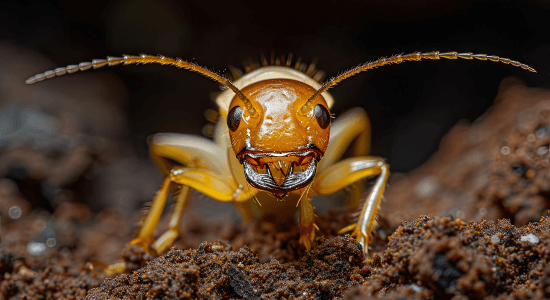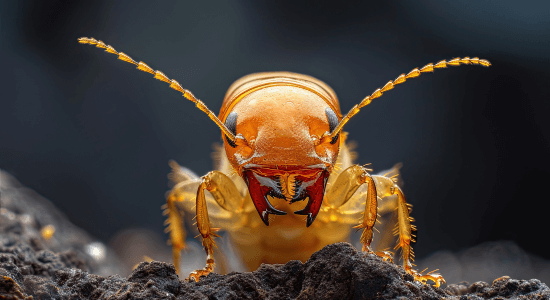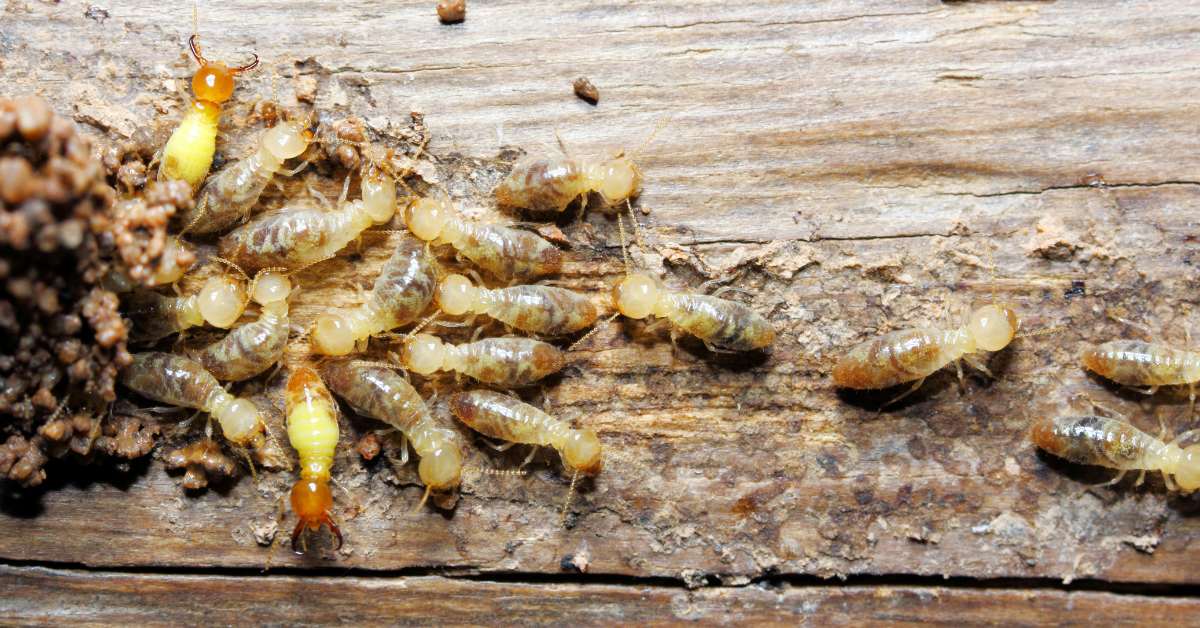Termites are tiny pests that chew on wood and paper products in their search for cellulose, a complex carbohydrate found in plant matter. Our homes can become a literal smorgasbord for these little pests, as they feast on wood framing, trim boards, flooring, sheetrock and even wallpaper.
Here in Roanoke, where the weather is generally mild, termites can create headaches in any season. But they thrive in the warmth, humidity and dampness of summer, and that’s when you’re most likely to notice their activity.
Don’t let termite activity turn into a termite infestation. The most effective termite control is regular inspections paired with immediate action with a termite exterminator like Bug Man.
Learn to Identify a Termite Infestation
It’s fairly easy to spot the signs of termite activity. We’ve published a full breakdown of termite infestation signs before, but here are some summarized clues that you may have a termite infestation:
- Little piles of wings in windows or doorways: Swarming termites are drawn to light sources. They fly in and then shed their wings and move into your home. Theses swarming termites are responsible for starting the termite colony.
- Wood, sheetrock or paint that looks blistered or bubbled: Termites bore into wood sources and begin eating it from the inside. This activity eventually creates soft spots and blisters in boards used for framing and trim. As the wood breaks down, materials like sheetrock and paint will collapse.
- Lots of small holes in woodwork: Once the swarmers get a termite colony started, they leave in search of the next site for a colony, boring their way out of your house and leaving a lot of little holes in the process.
- Mud tubes: Subterranean Termites create these long, thin tubes near the foundation of your home to move from the soil to feed on wood.
- Odd noises: If you suspect termite activity in a piece of wood, you may be able to hear the termites chewing or hear soldier termites thumping a warning about an approaching danger.
Know Your Local Termites
Two types of termites are found in Southwest Virginia: the Eastern Subterranean Termite and the Formosan Termite.

The most common termite in North America, as well as Roanoke VA, is the Eastern Subterranean Termite. They need soil to survive, so look for their mud tubes to identify them. These pests range in color from dark brown to white.

Less common are Formosan Termites, which is good because they are ferocious feeders and can quickly cause extensive damage to homes and businesses. They are either a creamy brown or a dark brown and have antennae.
Understanding Termite Prevention
You can take the first steps to keep termites out, such as dealing with any moisture problems around your home and in your crawl space and being aware and vigilant if your neighbors are battling a termite problem. The most effective prevention is to work with a pest control professional to assess your risk and develop a strategy that’s unique to your home.
Have a Termite Control Plan
A professional termite control plan gives you more than just peace of mind. If termites take up residence in your home, they can cause severe structural damage quickly. This is why you need to consult with a professional. With nearly three decades of experience with termites and other pests, Bug Man Exterminating has the know-how to successfully defend your home from a termite colony.
Schedule a Free Inspection for Termites
Call Bug Man Exterminating at (540) 345-2200 or use the form below to schedule your free inspection.


